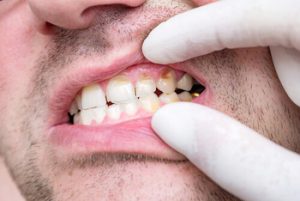Dental abscesses, those dreaded pockets of infection that can cause severe pain and significant discomfort, are a common yet serious dental problem. These infections can arise in different parts of the tooth and surrounding structures, leading to various abscess types, each with unique characteristics and treatment protocols. This blog will explore the various dental abscesses and their causes, symptoms, and treatments while providing tips on prevention and maintaining optimal dental health.
What Exactly is a Dental Abscess?
A dental abscess is a pus-filled pocket that forms due to a bacterial infection of an affected tooth. It can develop in different regions of the tooth and gum. These infections occur when bacteria invade the dental pulp — the soft inner pulp that contains blood vessels and nerves — often through a cavity, crack, or other dental trauma.
Discovering the Types of Dental Abscesses
Dental abscesses can be categorised into three primary types: periapical, periodontal, and gingival. Each type affects a different part of the tooth and gum structure.
Diving into Periapical Abscess
A periapical abscess develops at the apex of the tooth’s root. This abscess is typically caused by untreated tooth decay, dental trauma, or a crack in the tooth that allows bacteria to enter the tooth pulp. The infection spreads from the pulp to the apex of the tooth root, resulting in a painful abscess.
Symptoms of Periapical Abscess:
- Severe, throbbing tooth pain
- Sensitivity to hot or cold temperatures
- Swelling in the face or cheek
- Elevated body temperature
- Swollen lymph nodes in the neck
- Difficulty swallowing or breathing (in severe cases)
Treatment for Periapical Abscess:
- Root canal treatment to clean and remove the infected pulp tissue
- Antibiotic treatment to combat the bacterial infection
- Extraction of the tooth might be necessary if it is significantly compromised
- Small incision to drain the abscess, followed by thorough cleaning
Exploring Periodontal Abscess
A periodontal abscess affects the gums and the supporting bone tissue structures surrounding a tooth. This abscess typically results from advanced gum disease (periodontitis), which causes the formation of periodontal pockets that become infected.
Symptoms of Periodontal Abscess:
- Pain when chewing
- Gum redness and swelling
- A loose or mobile tooth
- Pus discharge from the gum
- Bad taste in the mouth
- Gum tenderness
Treatment for Periodontal Abscess:
- Draining the abscess through a small incision
- Cleaning the periodontal pockets to remove plaque and debris
- Antibiotic treatment
- Dental surgery in severe cases to remove infected tissue
- Tooth extraction, if necessary
Understanding Gingival Abscess
A gingival abscess develops in the gum tissue surrounding the bone and does not affect the tooth or the periodontal ligament. It is often caused by foreign objects like food particles becoming trapped in the gums.
Symptoms of Gingival Abscess:
- Localised gum swelling
- Pain in the affected gum area
- Redness and tenderness in the gum tissue
- Pus formation
Treatment for Gingival Abscess:
- Removing the foreign object causing the infection
- Draining the abscess
- Thorough cleaning of the affected gum area
- Antibiotic treatment if the infection is severe
Causes and Risk Factors of Dental Abscesses

- Neglecting dental hygiene can cause tooth decay and gum infections.
- Consumption of sugary foods and drinks that promote tooth decay
- Dental trauma that exposes the tooth pulp
- Dry mouth conditions that reduce saliva and increase bacterial growth
- Previous dental problems or surgeries
The Serious Risks of Ignoring a Dental Abscess
Without treatment, dental abscesses can lead to severe health issues. The infection can extend to other body parts, including the jaw, neck, and brain, potentially resulting in life-threatening conditions such as brain abscess or sepsis. Early treatment is crucial to prevent such complications.
Proactive Tips to Prevent Dental Abscesses
Maintaining proper oral hygiene is the best defence against dental abscesses. Here are some tips to keep your teeth and gums healthy:
- Brush your teeth at least twice a day with a soft toothbrush
- Use fluoride toothpaste to strengthen tooth enamel
- Floss daily to clear out food debris and plaque from between your teeth.
- Schedule regular dental cleanings and check-ups
- Avoid sugary foods and drinks that contribute to tooth decay
- Use an antibacterial mouthwash to reduce plaque build-up
- Drink plenty of water to keep your mouth moist and wash away food particles
Understanding the Root Causes of Tooth Decay
Tooth decay, often referred to as dental caries or cavities, is one of the main causes of dental abscesses. Understanding the root causes of tooth decay can help prevent cavities and subsequent complications like dental abscesses.
Poor Oral Hygiene: A Major Contributor
Inadequate brushing and flossing allow plaque—a sticky film of bacteria—to build up on teeth. Plaque generates acids that wear down tooth enamel, resulting in cavities and possibly abscesses.
Sugary Diets and Tooth Decay
Sugary foods and drinks and starchy snacks feed the bacteria in your mouth, promoting acid production that leads to tooth decay. Frequent consumption of sugary items increases the risk of cavities, especially if you don’t brush your teeth afterwards.
The Impact of Dry Mouth
Saliva helps cleanse the mouth of food particles and bacteria. Conditions such as certain medications or medical treatments that lead to dry mouth can reduce saliva production, thereby raising the risk of tooth decay and abscesses.
Dental Trauma and Its Consequences
Cracked or chipped teeth can expose the inner pulp to bacteria, leading to infection and decay. Dental injuries, therefore, can be a direct pathway for bacteria to cause abscesses.
Snacking and Sipping: Hidden Dangers
Constant snacking and sipping on sugary drinks supply a steady stream of sugar for harmful bacteria. This habit speeds up the decay process, making cavities and abscesses more likely.
Recognising the Signs of a Tooth Abscess
Detecting a tooth abscess early is crucial for prompt treatment and preventing further complications. Here are some key symptoms to watch for:
- Persistent and severe toothache: A throbbing pain that can extend to the jawbone, neck, or ear is a common indicator of an abscessed tooth. The pain may become more severe when lying down.
- Temperature sensitivity: Experiencing sharp pain while eating or drinking hot or cold items may signal an abscess involving the tooth pulp.
- Swelling and redness: Swelling in the face, cheek, or gums, accompanied by redness, is a typical sign of infection. This can be a noticeable indicator of an underlying abscess.
- Pus drainage: Pus or a bad taste in your mouth from a ruptured abscess is a clear sign of infection. This requires immediate dental attention.
- Difficulty swallowing or breathing: In severe cases, swelling can obstruct swallowing or breathing, requiring immediate medical intervention.
Treatment Options for Tooth Abscesses
When managing a dental abscess, timely and effective treatment is key to prevent further complications and alleviate pain. Several treatment options are available, each tailored to the specific type and severity of the abscess.
Root Canal Therapy: The Preferred Solution
Root canal treatment is commonly the optimal choice for a periapical abscess. It involves excising the infected pulp tissue, sanitising the root canal, and sealing it to stop subsequent infections.
Incision and Drainage: Immediate Relief
An incision may be made to drain the pus from periodontal and gingival abscesses. This relieves pain and pressure, followed by a thorough cleaning to remove the infection.
Antibiotic Treatment: Tackling the Infection
Antibiotics may be prescribed to help clear the infection, especially if it has spread beyond the abscess site. This treatment is often used with other procedures to ensure complete healing.
Tooth Extraction: Last Resort Option
Extraction may be mandatory if the tooth is too damaged to be saved. This is usually followed by procedures to replace the missing tooth, such as bridges or dental implants.
Staying Ahead: Preventing Tooth Decay and Abscesses
Maintaining good oral hygiene and healthy habits is the best way to prevent tooth decay and abscess formation. Here are some additional tips to protect your dental health:
- Regular Dental Visits: Routine dental check-ups and professional cleanings allow your dentist to spot and treat the initial stages of tooth caries and gum disease before they advance to abscesses.
- Use of Dental Sealants: Dental sealants are protective layers placed on the chewing surfaces of molars. They act as a shield against bacteria and food debris, thus lowering the chances of cavities.
- Fluoride Treatments: Fluoride boosts the strength of tooth enamel, making it more resistant to decay. Your dentist may recommend these treatments, particularly for children at increased risk of cavities.
- Avoid Tobacco Products: Smoking and chewing tobacco are known to lead to gum disease and tooth decay, thereby increasing the likelihood of abscesses. Stopping these habits can markedly improve your oral health.
Knowing When to Seek Emergency Dental Care

- Sudden, severe, and unrelenting tooth pain
- Swelling in the face or jaw that worsens
- High fever or chills
- Difficulty swallowing or breathing
- A persistent bad taste or discharge in the mouth
Wrapping It Up: Stay Proactive, Stay Healthy
Dental abscesses are extremely painful and can severely compromise your overall health if untreated. Understanding the different types of dental abscesses—periapical, periodontal, and gingival—their causes, symptoms, and treatments can help you take preventive steps to preserve your dental health. Routine dentist appointments, proper dental care habits, and prompt management of dental conditions are key to preventing abscess formation and ensuring a healthy, pain-free smile.
Remember, if you suspect you have a dental abscess, don’t wait. See a dentist immediately to prevent complications.
Contact us for a consultation at (08) 7078 8263.
Note: Any surgical or invasive procedure carries risks. Before proceeding, you should seek a second opinion from an appropriately qualified health practitioner.
Sources:
Medical News Today. (n.d.). What to know about a tooth abscess. Retrieved from https://www.medicalnewstoday.com/articles/170136
Healthline. (n.d.). Dry mouth: Causes, symptoms, and treatment. Retrieved from https://www.healthline.com/health/dry-mouth
Johnson & Johnson. (n.d.). 4 things scientists know about the bacteria in your mouth. Retrieved from https://www.jnj.com/innovation/4-things-scientists-know-about-the-bacteria-in-your-mouth
Dental Health Foundation. (n.d.). Root canal treatment. Retrieved from https://www.dentalhealth.org/root-canal-treatment


